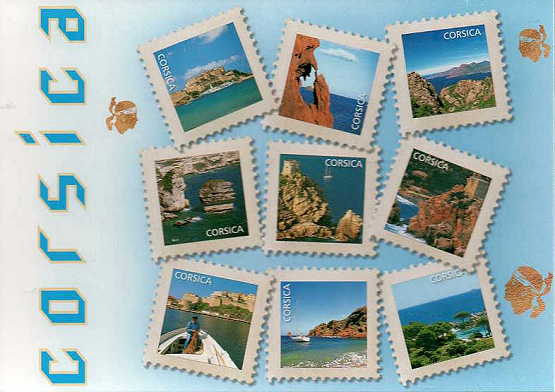According to
Martine, Corsica in the Mediterranean Sea is one of the most beautiful islands
in the world – and she should know, she lives there.
Postcard - 188
Although the
island is separated from the European continental mainland by the Ligurian Sea
and is closer to Italy than to the French mainland, politically Corsica is part
of Metropolitan France.
Corsica is
one of the 27 régions of France, although it is designated as a territorial
collectivity (collectivité territoriale) by law. As a territorial collectivity,
it enjoys some greater powers than other French régions.
Postcard - 251
Mountains
represent two thirds of the island and form a single chain, 183 kilometres long
and 83 kilometres wide. Monte Cinto as the highest peak at 2,706 metres (8,878
ft) and 20 other summits of more than 2,000 metres (6,600 ft).
The French
emperor Napoléon Bonaparte was born in 1769 in the Corsican capital of
Ajaccio. The northern town of Calvi is believed
to be the birthplace of the explorer Christopher Columbus.
This statue
in Corte is of Pasquale Paoli (1725 –1807), a Corsican patriot and leader
who designed and wrote the constitution of the state. The photo looks to have been taken on some sort of children's outing (note the supervising adult in the background)!
Postcard - 226
The
Corsican Republic was a democracy
asserting that the elected Diet of Corsican representatives had no master.
Paoli held his office by election and not by appointment. It made him
commander-in-chief of the armed forces as well as chief magistrate.
Paoli's
government claimed the same jurisdiction as the Republic of Genoa. In terms of
de facto exercise of power, the Genoese held the coastal cities, which they
could defend from their citadels, but the Corsican republic controlled the rest
of the island from Corte, its capital.
In 1768 the
French conquered Corsica and Paoli oversaw the Corsican resistance before
being forced into exile in Britain where
he was a celebrated figure. He returned and helped to create the Anglo-Corsican
Kingdom which lasted between 1794 and 1796. After the island was re-occupied by
France he again went into exile in Britain where he died in 1807.
The
wonderful Martine has also kindly sent me map cards of some of the regions of
mainland France and I shall aim to blog those (eventually – blogging cards is a
slow business).




No comments:
Post a Comment
Welcome. I love it when visitors comment - even if it's only to say "Hi, I've been here!"